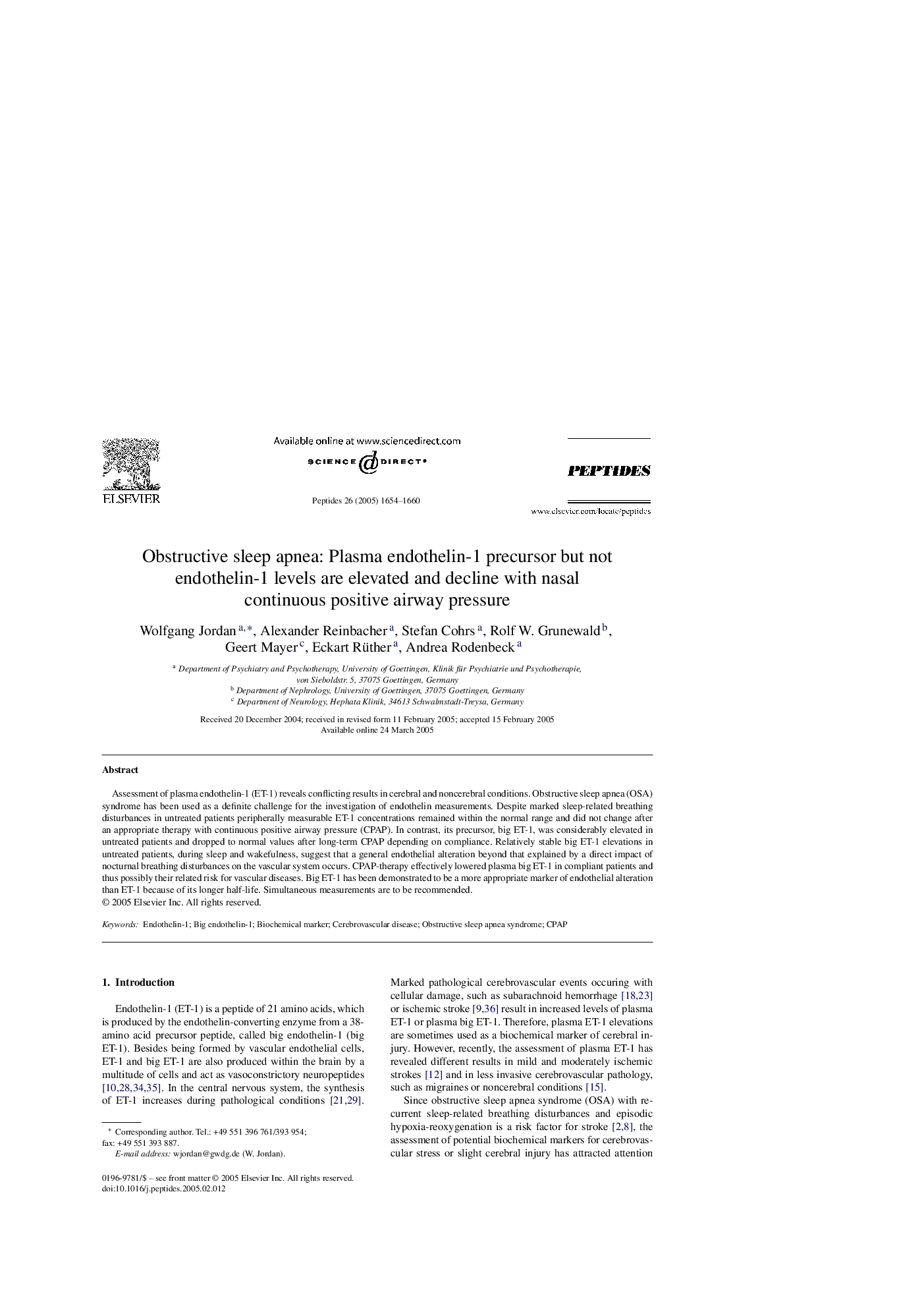| Article ID | Journal | Published Year | Pages | File Type |
|---|---|---|---|---|
| 10836908 | Peptides | 2005 | 7 Pages |
Abstract
Assessment of plasma endothelin-1 (ET-1) reveals conflicting results in cerebral and noncerebral conditions. Obstructive sleep apnea (OSA) syndrome has been used as a definite challenge for the investigation of endothelin measurements. Despite marked sleep-related breathing disturbances in untreated patients peripherally measurable ET-1 concentrations remained within the normal range and did not change after an appropriate therapy with continuous positive airway pressure (CPAP). In contrast, its precursor, big ET-1, was considerably elevated in untreated patients and dropped to normal values after long-term CPAP depending on compliance. Relatively stable big ET-1 elevations in untreated patients, during sleep and wakefulness, suggest that a general endothelial alteration beyond that explained by a direct impact of nocturnal breathing disturbances on the vascular system occurs. CPAP-therapy effectively lowered plasma big ET-1 in compliant patients and thus possibly their related risk for vascular diseases. Big ET-1 has been demonstrated to be a more appropriate marker of endothelial alteration than ET-1 because of its longer half-life. Simultaneous measurements are to be recommended.
Keywords
Related Topics
Life Sciences
Biochemistry, Genetics and Molecular Biology
Biochemistry
Authors
Wolfgang Jordan, Alexander Reinbacher, Stefan Cohrs, Rolf W. Grunewald, Geert Mayer, Eckart Rüther, Andrea Rodenbeck,
